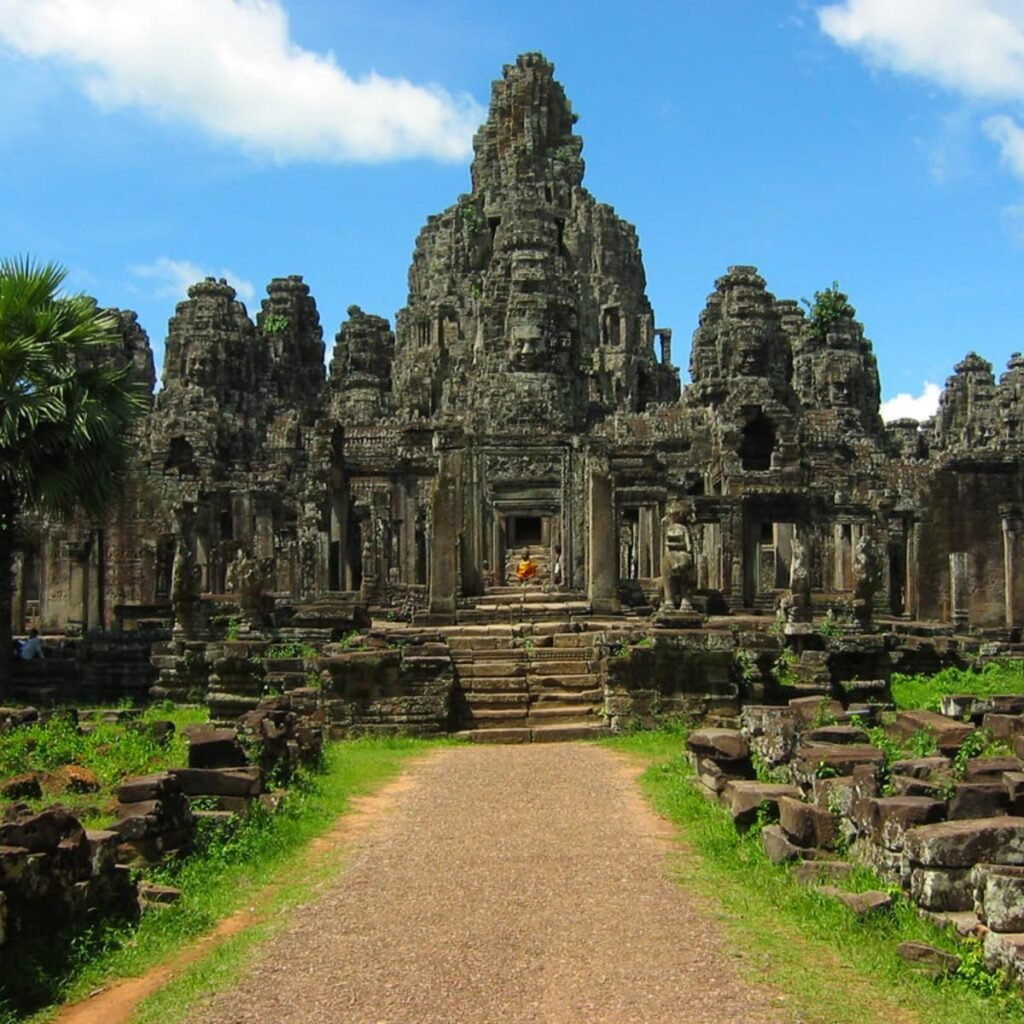
Nestled amidst the lush jungles of Cambodia lies one of the most awe-inspiring architectural wonders of the ancient world: Angkor Wat. This majestic temple complex, dating back to the 12th century, stands as a testament to the ingenuity, creativity, and spiritual devotion of the Khmer Empire. With its intricate carvings, towering spires, and serene surroundings, Angkor Wat beckons travelers from across the globe to embark on a journey through time and immerse themselves in the splendor of Cambodia’s rich cultural heritage.
A Glimpse into History
Built during the reign of King Suryavarman II in the early 12th century, Angkor Wat was originally constructed as a Hindu temple dedicated to the god Vishnu. Over the centuries, it evolved into a Buddhist pilgrimage site, reflecting the cultural and religious diversity of the Khmer Empire.
The name “Angkor Wat” translates to “City of Temples” or “City of Monks,” underscoring the grandeur and significance of this architectural marvel. Stretching across an area of over 162 hectares, Angkor Wat is the largest religious monument in the world, comprising a vast complex of temples, pavilions, and reservoirs surrounded by a moat.
Architectural Splendor
At the heart of Angkor Wat stands the central temple complex, a masterpiece of Khmer architecture and engineering. The temple’s iconic silhouette, with its five towering spires symbolizing Mount Meru, the mythical home of the gods, is instantly recognizable and has become synonymous with Cambodia’s cultural identity.
The intricate bas-reliefs and carvings that adorn the walls of Angkor Wat depict scenes from Hindu mythology, Khmer history, and daily life during the reign of the Khmer Empire. From epic battles and celestial beings to intricate floral motifs and celestial dancers, these carvings offer a window into the artistic prowess and spiritual beliefs of the Khmer people.
Sacred Spaces
Angkor Wat is not just a monument of stone; it is a living testament to the enduring spiritual legacy of Cambodia. Visitors to the temple complex can witness Buddhist monks performing rituals and prayers amidst the ancient ruins, offering a glimpse into the profound reverence and devotion that still permeates this sacred site.
The tranquility of Angkor Wat’s surroundings, with its towering trees, serene ponds, and melodious bird songs, provides the perfect backdrop for introspection and meditation. As the sun rises over the temple spires and casts a golden glow across the landscape, visitors can’t help but feel a sense of awe and wonder at the timeless beauty of this architectural masterpiece.
Exploring the Temples
Beyond Angkor Wat, the greater Angkor Archaeological Park is home to a myriad of temples, palaces, and ancient ruins waiting to be discovered. From the enigmatic faces of Bayon Temple to the jungle-clad ruins of Ta Prohm, made famous by the movie “Tomb Raider,” each temple offers its own unique blend of history, mystery, and majesty.
Exploring the temples of Angkor is like embarking on a journey through time, where every stone tells a story and every carving whispers secrets of the past. Whether wandering through the corridors of Angkor Wat at sunrise, marveling at the intricate carvings of Banteay Srei, or climbing to the summit of Phnom Bakheng for a panoramic view of the surrounding landscape, visitors to Angkor are sure to be captivated by the beauty and grandeur of Cambodia’s ancient heritage.
Preserving the Past for the Future
As one of the most important archaeological sites in Southeast Asia, Angkor Wat holds immense cultural, historical, and spiritual significance for the people of Cambodia and the world. Efforts to preserve and protect the temples and surrounding landscape are ongoing, ensuring that future generations can continue to marvel at the wonders of Angkor for centuries to come.
In conclusion, Angkor Wat is not just a tourist destination; it is a symbol of Cambodia’s resilience, creativity, and cultural richness. From its awe-inspiring architecture to its spiritual significance, Angkor Wat continues to inspire and enchant travelers from around the globe, inviting them to embark on a journey of discovery and wonder in the heart of the Cambodian jungle.
